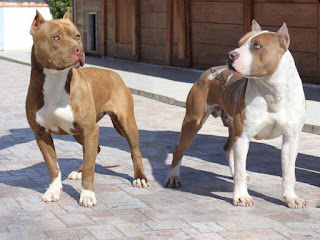Introduction:
The place of origin of American Water Spaniel is United States. The dog is a sporting breed. It is a bird dog, used to hunt birds. The life span of the American Water Spaniel is 10-12 years. The other names used for the breed is American Brown Spaniel, American Brown Water Spaniel. It is also called as AWS as its nickname.

Origin / History:
The American Water Spaniel is an intelligent and energetic dog. The American Water Spaniel is a good companion dog. They behave very well if they are properly trained. They prove to be a good watch dog as they are accepted as a barking breed. They are an enthusiastic swimmer, loves to work in swamps, lakes and rivers. They are less seen at dog shows, but a very good family pet. They love to be around people.
Physical Appearance:
The height of American Water Spaniel is 15-18 inches (38-46 cm) and the weight is 25-45 pounds (11-20 kg). The American Water Spaniel is a compact dog with medium size length. They have yellowish brown to dark brown color eyes. The nose is dark and moderate in size. They have dropped ears that are long and well feathered. The length of the ears is such that it touches the nose. The tail is long and slightly curved. The color of the breed is solid liver, brown or dark chocolate in color. The legs are strong and powerful.
Health Concerns:
The American Water Spaniel is generally a healthy breed. But some are occasionally prone to skin problems and hip dysplasia.
Grooming:
The American Water Spaniel does not need much shedding. Weekly brushing is suggested to maintain the coat. They should be given lots of regular exercise.
Cost:
The cost of purchasing this breed is $ 1000 USD
Advantages:
Disadvantages:
The place of origin of American Water Spaniel is United States. The dog is a sporting breed. It is a bird dog, used to hunt birds. The life span of the American Water Spaniel is 10-12 years. The other names used for the breed is American Brown Spaniel, American Brown Water Spaniel. It is also called as AWS as its nickname.

Origin / History:
- Originally the breed was called the Brown Water Spaniel
- Doctor FJ Pfeifer is credited with rescuing the breed from obscurity through the creation of a written standard and promotion with a breed club.
- The first AKC registered as American Water Spaniel was Doctor FJ Pfeifer’s own dog named “Curley Pfeifer”
- The American Water Spaniel was formally recognized as a purebred dog in 1920 by the United Kennel Club
- It was finally recognized by the American Kennel Club in 1940
The American Water Spaniel is an intelligent and energetic dog. The American Water Spaniel is a good companion dog. They behave very well if they are properly trained. They prove to be a good watch dog as they are accepted as a barking breed. They are an enthusiastic swimmer, loves to work in swamps, lakes and rivers. They are less seen at dog shows, but a very good family pet. They love to be around people.
Physical Appearance:
The height of American Water Spaniel is 15-18 inches (38-46 cm) and the weight is 25-45 pounds (11-20 kg). The American Water Spaniel is a compact dog with medium size length. They have yellowish brown to dark brown color eyes. The nose is dark and moderate in size. They have dropped ears that are long and well feathered. The length of the ears is such that it touches the nose. The tail is long and slightly curved. The color of the breed is solid liver, brown or dark chocolate in color. The legs are strong and powerful.
Health Concerns:
The American Water Spaniel is generally a healthy breed. But some are occasionally prone to skin problems and hip dysplasia.
Grooming:
The American Water Spaniel does not need much shedding. Weekly brushing is suggested to maintain the coat. They should be given lots of regular exercise.
Cost:
The cost of purchasing this breed is $ 1000 USD
Advantages:
- The American Water Spaniels are very good with children and other pets in the family
- They are very gentle, kind and affectionate dogs
Disadvantages:
- The American Water Spaniels are dog aggressive with strange dogs
- They are very much food possessive



